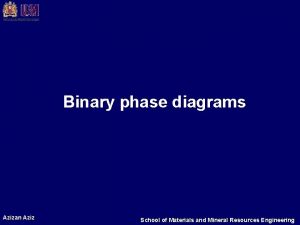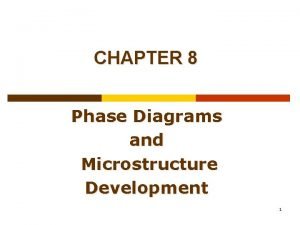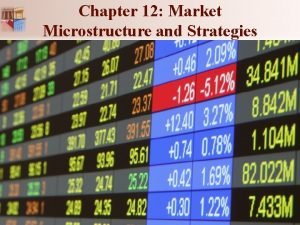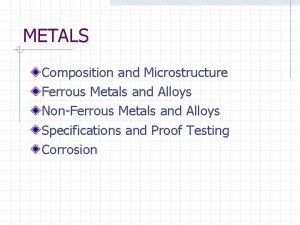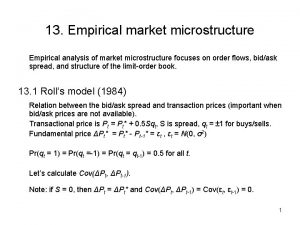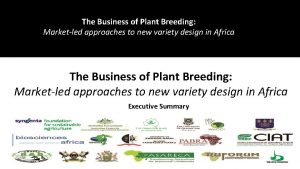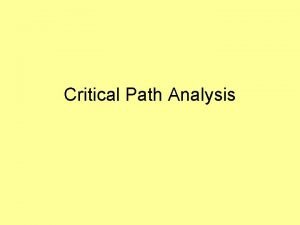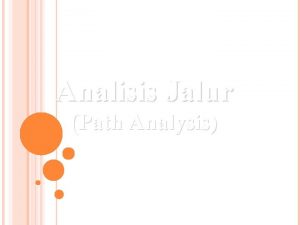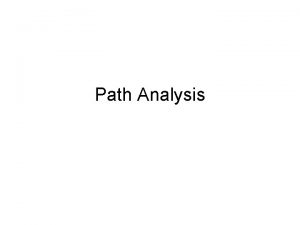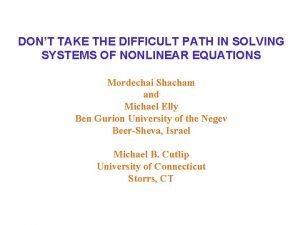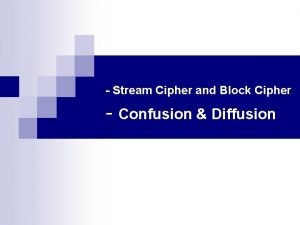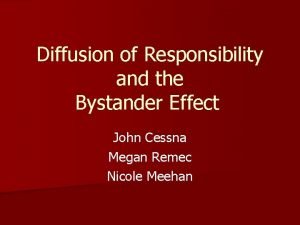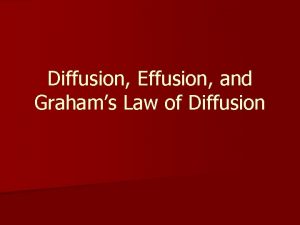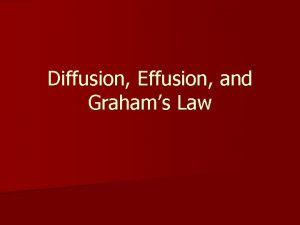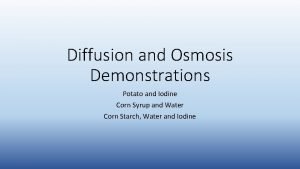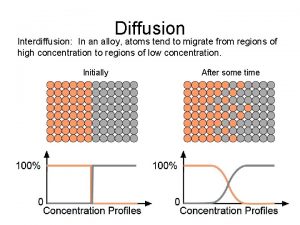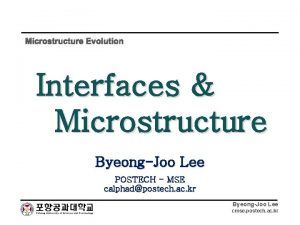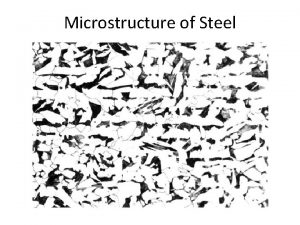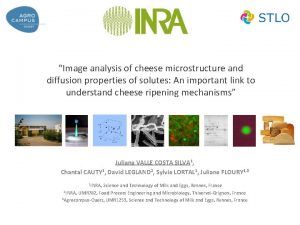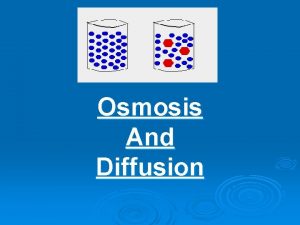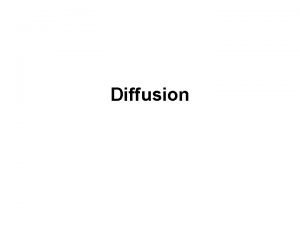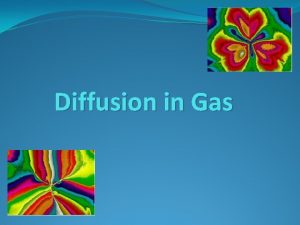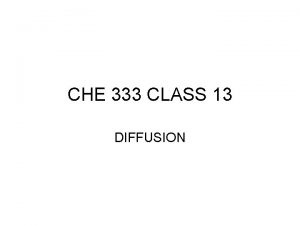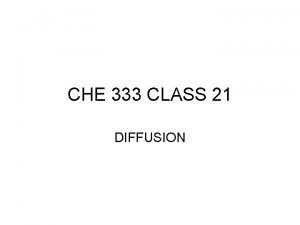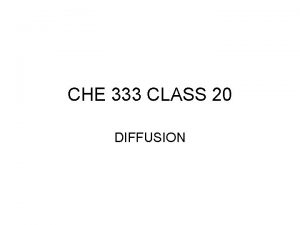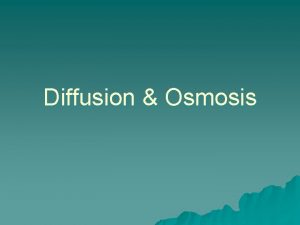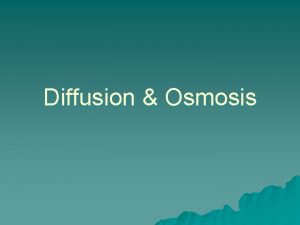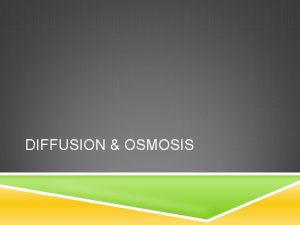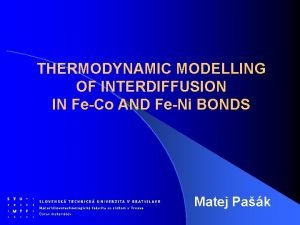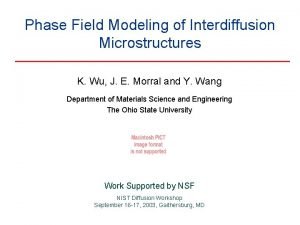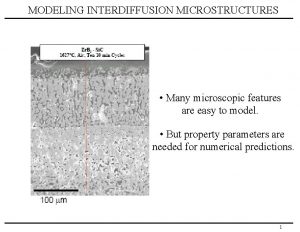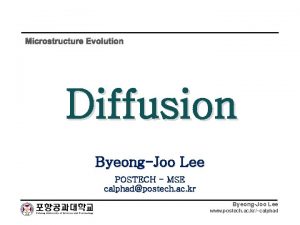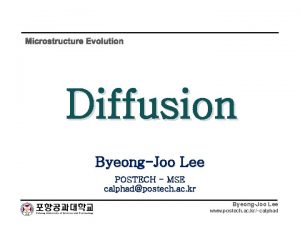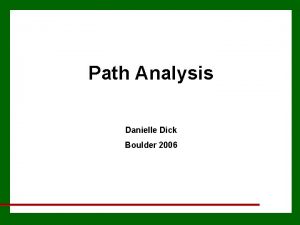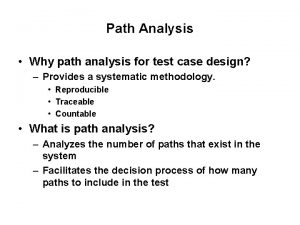Analysis of Diffusion Path and Interdiffusion Microstructure Y


























- Slides: 26

Analysis of Diffusion Path and Interdiffusion Microstructure Y. Wang and J. E. Morral Department of Materials Science and Engineering The Ohio State University Work Supported by NSF NIST Diffusion Workshop April 19 -20, 2005, Gaithersburg, MD

Outline • Discontinuities in interdiffusion microstructure and “horns” in the diffusion path • Motion of Type-0 boundaries and its effect on the shape of diffusion path • Variation in microstructure and diffusion path caused by deviation from local-equilibrium conditions and by precipitate coarsening • Special points on the phase diagram that act as “strange attractors” of the diffusion paths • Development of various morphological instabilities including concentration-gradient induced rafting These phenomena are associated with intimate thermodynamic and kinetic coupling in multi-component diffusion and interactions between interdiffusion and microstructural evolution in multi-phase regions

Understanding the “Horns” in Diffusion Path Horns predicted by DICTRA and Phase Field simulations Schwind, Helendar and Argren, Scripta mater. 2001 Wu, Morral and Wang, Acta mater. 2001

A-B-C Model System Free energy model C a’ • Elements A and B form ideal solution while elements A and C or B and C form regular solutions a A B

Linear Diffusion Path B=5. 0 C=1. 0 A=5. 0

(2) Single-Horn Diffusion Path B=1. 0 C=5. 0 A=10. 0 (1)

Single-Horn Diffusion Path 3 4 1 1 2 2 3 4

Double-Horn Diffusion Path

Interpretation of Simulation Results Wu, Morral and Wang, Acta mater. 49, 3401 – 3408 (2001) t=0. 0 B=10. 0 C=5. 0 A=1. 0 JA JB net flux of (A+B) t=2000. 0 '< < '< + c 1 = 25 at%, c 2 = 40 at% (2) c 1 = 32 at%, c 2 = 60 at% (1) Yong-Ho Sohn and M. Dayananda Simulations have stimulated the development of theoretical understanding and new theoretical principles have guided the interpretation of simulation results

+ / + Couple B=1. 0 C=5. 0 A=10. 0 t=0. 0 (2) t=2000. 0 > + c 1 = 25 at%, c 2 = 40 at% JB c 1 = 32 at%, c 2 = 60 at% JA net flux of (A+B) Wu, Morral and Wang, Acta mater. 49, 3401 – 3408 (2001) (1)

Moving Type 0 Boundary K. Wu, J. E. Marrol and Y. Wang, Acta mater. 52: 1917 -1925 (2004) t = 0 t = 100 t = 2000 1=1. 0 2=5. 0 3=10. 0 4608 x 64 size simulation, 1024 x 256 size output • Ppt and Type 0 boundary migrate as a results of Kirkendall effect • Type 0 boundary becomes diffuse • Kirkendall markers move along curved path and marker plane bends around precipitates

Diffusion path: comparison with 1 D simulation Size and position changes during interdiffusion

Interdiffusion Microstructure in NI-Al-Cr Diffusion Couple 0 hr XCr =0. 25, XAl=0. 001 320 m 4 hr 25 hr 100 hr at 1200 o. C Exp. Observation by Nesbitt and Heckel 200 m Ni-Al-Cr at 1200 o. C • Free energy data from Huang and Chang • Mobilities in from A. EngstrÖm and J. Ågren • Diffusivities in from Hopfe, Son, Morral and Roming

Effect of Cr content on interface migration (a) 320 m Annealing time: 25 hours (b) Ni-Al-Cr at 1200 o. C (c) (d) a b c d

Diffusion path and recess rate comparison with experiment Exp. measurement by Nesbitt and Heckel

Effect of Al content on interface migration (a) Annealing time: 25 hours 320 m (b) b a

Interpretation of Phase Field Simulation - Effect of Coarsening t=0 t = 25 h t = 100 h

Effect of Pure Coarsening

Interpretation of Phase Field Simulation - Effect of Coarsening t=0 t = 100 h t = 200 h

Interpretation of Phase Field Simulation - Deviation from Local Equilibrium Condition 0. 20 0. 15 0. 10 A. EngstrÖm, J. E. Morral and J. Ågren Acta mater. 1997 e 0025. mov e 0045. mov

“strange attractors” of the diffusion paths Lawrence A. Carol, Michigan Tech. 1985

Concentration-Gradient Induced Rafting Interdendritic zone Aging of initially as cast alloy (1100 o. C for 1500 hr. ) Secondary dendritic arm Dendritic core Hazotte and Lacaze, Scripta metall. Secondary dendritic arm

Interdiffusion Induced Rafting B=5. 0 C=1. 0 A=5. 0 t=0 Initial Configuration left: XB=0. 125, XC=0. 489 right: XB=0. 6 XC=0. 1 Misfitting particle Stress-free particles t = 40 t = 220 t = 400 No interdiffusion With interdiffusion

Summary – Predicting of Interdiffusion Microstructure • DICTRA and Phase Field share the same thermodynamic and diffusivity databases • DICTRA directly outputs diffusion path on phase diagram and runs on PC, but is an 1 D program, assumes local-equilibrium, treats precipitates as point sources or sinks, and is accurate when most diffusion occurs in a single, matrix phase, no metastable states, and for limited boundary conditions • Phase Field directly outputs microstructure, does not require local-equilibrium, can treat diffusion couples of different matrix phase, is able to consider a wide variety of boundary conditions, and allows for studies of effects of precipitates morphology on interdiffusion and interdiffusion on microstructural evolution. But many critical issues remain • Computation efficiency • How to determine accurately the average compositions in the two-phase regions • How to analyze the diffusion path using statistically meaningful microstructures and computationally tractable system sizes without artificial Gibbs-Thompson effect • Incorporation of nucleation – work in progress

Phase Field Equations Diffusion equations Thermodynamic parameters Kinetics parameters Mij - chemical mobilities ij - gradient coefficients I - atomic mobilities - molar density

Effect of Gradient Term J
 Macrostructure of a dictionary
Macrostructure of a dictionary Lever rule fe-c phase diagram
Lever rule fe-c phase diagram Development of microstructure in isomorphous alloys
Development of microstructure in isomorphous alloys Market microstructure trading strategies
Market microstructure trading strategies Microstructure of ferrous metals
Microstructure of ferrous metals High frequency market microstructure
High frequency market microstructure Roll's model bid ask spread
Roll's model bid ask spread Simple diffusion
Simple diffusion Relocation and expansion diffusion
Relocation and expansion diffusion Qimata
Qimata Path analysis in plant breeding
Path analysis in plant breeding Cpa critical path analysis
Cpa critical path analysis Contoh analisis jalur (path analysis)
Contoh analisis jalur (path analysis) Path analysis spss
Path analysis spss The difficult path analysis
The difficult path analysis Confusion and diffusion
Confusion and diffusion Drift current and diffusion current in semiconductor
Drift current and diffusion current in semiconductor Drift current and diffusion current in semiconductor
Drift current and diffusion current in semiconductor Intrinsic semiconductor
Intrinsic semiconductor Drift current density unit
Drift current density unit Diffusing responsibility
Diffusing responsibility Difference between diffusion and effusion
Difference between diffusion and effusion Confusion and diffusion
Confusion and diffusion Transport protein
Transport protein Facilitated diffusion and active transport
Facilitated diffusion and active transport Grahams law
Grahams law Potato and iodine diffusion experiment
Potato and iodine diffusion experiment

